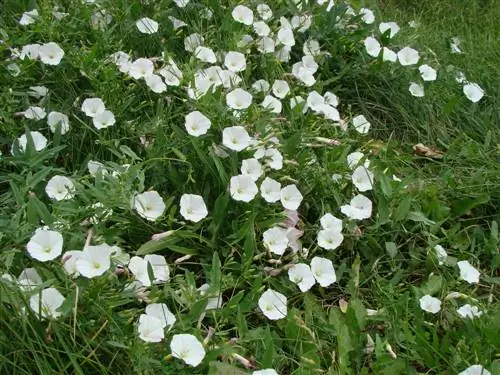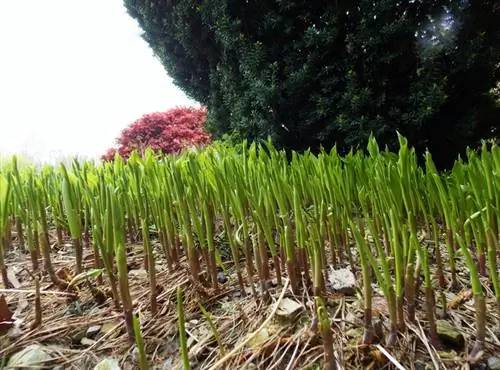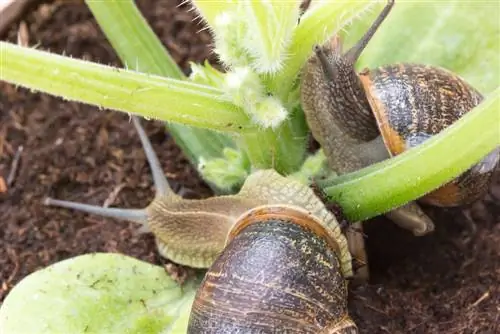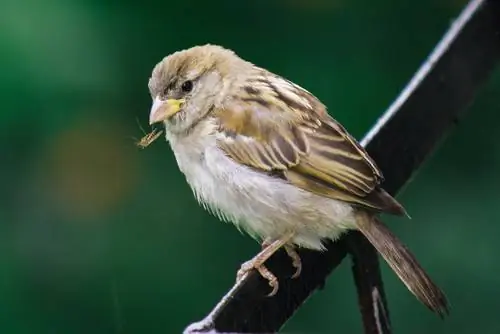- Author admin [email protected].
- Public 2023-12-16 16:46.
- Last modified 2025-01-23 11:22.
The bindweed develops funnel-shaped flowers with delicate colors. It's actually a real beauty if it weren't for the uncontrollable urge to spread. It can quickly drive the gardener to despair because the root system proves to be stubborn.
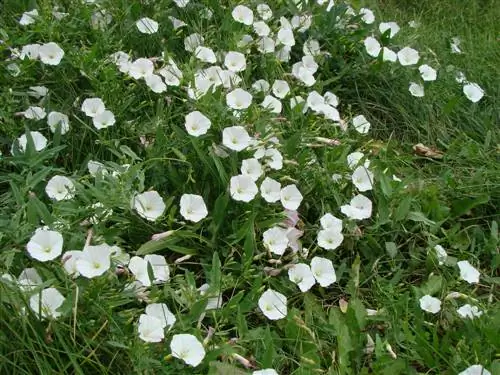
Why is bindweed so difficult to remove?
The field bindweed has a deep root system that penetrates up to two meters into the ground and spreads through rhizomes and runners. To combat them, consistent removal of shoots, exposing roots and covering the soil is required.
Why bindweed spreads so much
Although the morning glory plant produces pretty flowers, it is not popular in gardens. It grows up crops and ornamental plants and limits their vitality. The plants quickly take up large areas due to their great need to spread.
Growth
This species belongs to the rhizome geophytes that reproduce vegetatively through root shoots and runners. Even the smallest root residues can sprout. The root system penetrates into soil layers two meters deep, which makes combating it more difficult. The climbing plant is adapted to dry locations because its strong and deep roots can optimally supply the leaf mass with water. The high suction power is essential for the survival of the plant. If you cut off the above-ground parts of the plant, they will wither within a short time.
Containment strategies
Once the field bindweed has established itself in the garden, complete control is often difficult. It can take years for the weeds to be completely eliminated. Patience and persistence are of great importance if you want to get this problem under control. It is important that you starve the plant and continually remove root webs.
Remove urges
Start control measures in early spring. The further the growing season progresses, the easier it is for the young plants to establish themselves. Remove seedlings from the soil regularly before they reach the fourth leaf stage. Up to this point, the roots react sensitively to cutting above ground and the chances of success are comparatively high.
Procedure:
- check every two to three weeks
- Pluck out new sprouts directly
- Carry out the measure for at least one year
Exposing roots
When the harvest is over, dig up the bed thoroughly. Work the seedbed with a plow or cultivator to a depth of 30 centimeters. Even though the root system usually extends deeper, the exposed roots dry out in the air. You can then pull them out of the ground and dispose of them. Nevertheless, if there is a strong spread, it makes sense to till the soil as deep as possible.
Cover the floor
In extreme cases, you should cover the garden floor with black foil (€19.00 on Amazon). This means that the field bindweeds do not receive any light and slowly die. Cut cross-shaped slits in the fleece so that vegetable and ornamental plants can continue to grow in the bed. To improve the appearance, we recommend covering the separating layer with bark mulch, sand or earth. Leave the weed fleece on the area for one to two years to achieve the greatest possible control success.
Tip
Black plastic mulch is an ideal alternative for small areas or the greenhouse.

